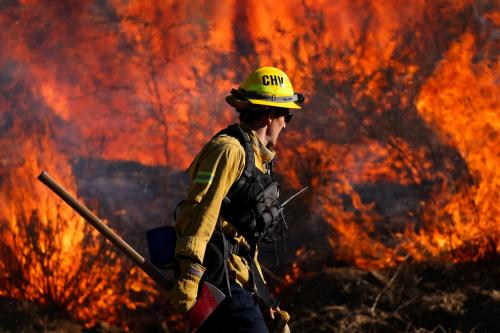Note: This article originally in the
All India Disaster Mitigation Institute’s
volume “Making District Disaster Management Plan Pro-Poor.”
Developing disaster management plans at the local level is the right thing to do. While national policies and plans are essential, when a disaster occurs it is almost always local communities and local authorities who are on the front line of response. Such planning processes should include both measures to reduce the risks of disasters and to enable an effective response when disasters do happen. And there are ways to ensure that such plans and policies respect the human rights of affected communities. In our work to promote a rights-based approach to disaster management, we have found that one of the most important components is to simply raise awareness among communities and political leaders of rights issues. People shouldn’t lose their basic human rights when a disaster occurs!
International guidelines on protecting people in situations of natural disasters[1] identify four categories of rights which should be upheld when planning for, responding to or recovering from a disaster. In a sense they form a sort of checklist which can be used when evaluating disaster management plans.
First is the imperative to protect the lives, security and physical integrity of persons affected by disasters and to uphold family unity. This group of rights directs attention to lifesaving measures, such as evacuations and protection against the secondary impacts of natural disasters. People sometimes need to be moved from areas where their lives are at risk but they need to be moved in a way that upholds their rights. Measures should be taken to ensure that families are not separated and that people are safe when they live in temporary shelters, with families or among communities. And people also need to be protected against violence, including gender-based violence, which unfortunately often increases in the aftermath of a conflict.[2]
Secondly, there is an imperative to protect rights related to the provision of food, health, shelter and education in the aftermath of a disaster and to do so in ways that uphold the rights of affected people. This means that particular attention must be paid to groups who are particularly vulnerable and marginalised and to ensure that assistance is provided to people on the basis of need and is not discriminatory in nature.
Issues around land and property are particularly contentious in many parts of the world and women (particularly widows) and orphaned children often need particular assistance to reclaim housing or land deeds after a disaster.
A third set of rights relates to housing, land and property; restoration of livelihoods; and secondary and higher education. Issues around land and property are particularly contentious in many parts of the world and women (particularly widows) and orphaned children often need particular assistance to reclaim housing or land deeds after a disaster. Rehabilitation of livelihoods after a disaster requires not only political commitment and technical expertise, but also a sensitivity to the needs and rights of particular groups.
Finally, there is a set of rights related to documentation, freedom of movement, and to civil and political rights that need to be upheld, particularly as time goes on. In applying a rights-based approach to disaster management, the issues of information and participation of affected communities are crucial. People have a right to information and a right to participate in decisions that affect their lives – including preparedness training and measures to reduce the risks of disasters. These are not ‘luxuries’ to be considered after basic needs have been met, but should be incorporated into all phases of disaster management. Moreover, experience has shown that supporting community participation isn’t just the morally right thing to do–it also results in more effective disaster preparedness, response and recovery.
[1] IASC Operational Guidelines on the Protection of Persons in Situations of Natural Disasters, 2011.
[2] See Canadian Red Cross, “Predictable, preventable: Overcoming the challenges of violence during and after disasters”, http://www.redcross.ca/article.asp?id=42867&tid=001



Commentary
A Human Rights-Based Approach and District Disaster Management Plans
July 1, 2012